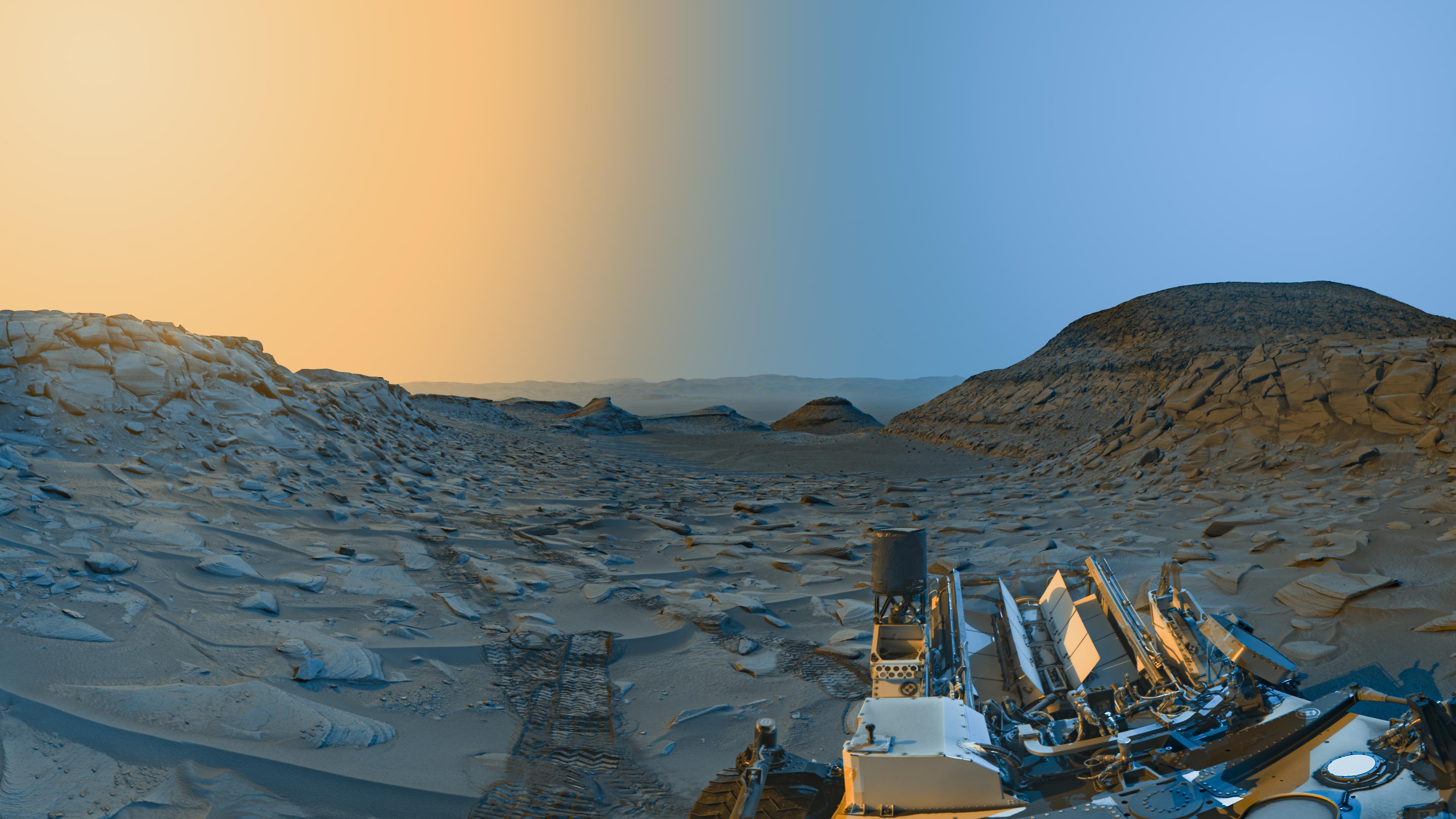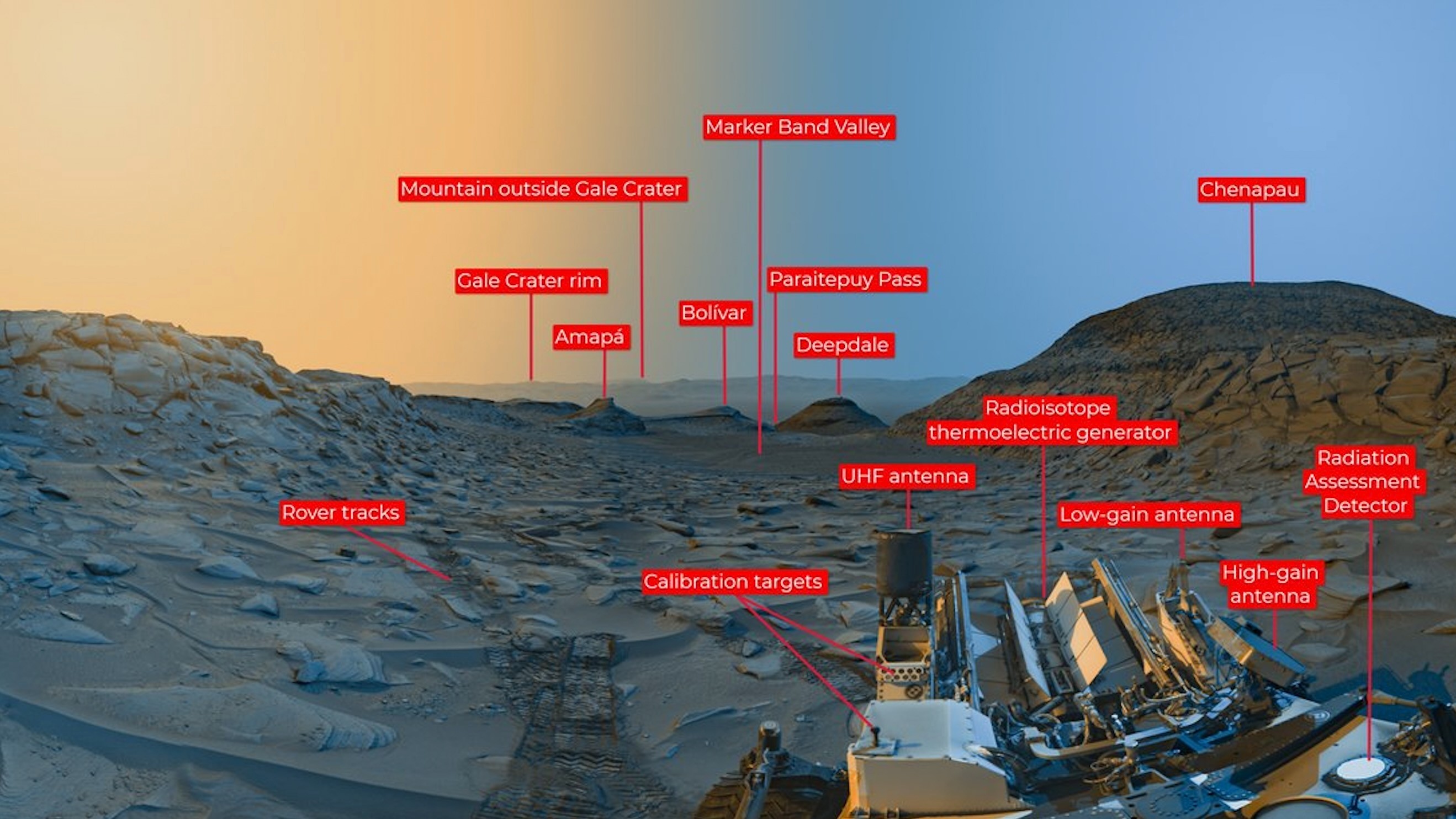
NASA's Curiosity rover has sent home a stunning postcard from Mars that shows the same region of the Red Planet in the morning and in the afternoon.
The scenic view of the Marker Band Valley was created by uniting two panoramas of the region that Curiosity took on April 8, 2023 with its black-and-white navigation cameras. One panorama was taken at 9:20 a.m. local Mars time, whereas the other was snapped at 3:40 p.m. local time.
The image represents the robot's last view of the region as it moves off to continue its ongoing mission, scouring the 96-mile-wide (154 kilometers) Gale Crater for traces of organic molecules and other possible indications that life could once have existed on Mars.
Related: Life on Mars: Exploration and evidence

The newly released postcard image, which has been colorized from its original black and white, shows the dramatically different lighting conditions at Marker Band Valley, with the morning-afternoon contrast revealing intricate details of the scene as seen by Curiosity.
"Anyone who's been to a national park knows the scene looks different in the morning than it does in the afternoon," Doug Ellison, a Curiosity engineer at NASA's Jet Propulsion Laboratory in Southern California, said in a statement. "Capturing two times of day provides dark shadows because the lighting is coming in from the left and the right like you might have on a stage — but instead of stage lights, we're relying on the sun."
Ellison was part of the team that planned and processed the images to create the postcard view. Blue was added to the image to represent Curiosity's view of the morning sky, while the yellow tint was added to illustrate its view in the afternoon, NASA officials said in the statement.
What can be seen in Curiosity's postcard from Mars?
Curiosity's latest postcard was taken almost 11 years after the rover first touched down on the Martian surface. The picture shows the robot's view from the flank of the 3-mile-high (5 km) Martian mountain called Mount Sharp, which rises from the center of Gale Crater.
As the rover looks back over its shoulder, just beyond its track marks lies Marker Band Valley, which is a winding area in the "sulfate-bearing region" where Curiosity discovered signs of an ancient lake that existed billions of years ago in the Red Planet's watery past.
Beyond this, but still in view of Curiosity, are the hills "Bolívar" and "Deepdale," and between them is a channel called "Paraitepuy Pass." The rover drove through that pass in August 2022, as it celebrated its 10th anniversary on Mars. (Curiosity landed in August 2012.)
The shadows seen in the image are deeper than usual due to the fact it was captured during winter at Curiosity's position, which also represents a time when airborne dust is lower.
"Mars' shadows get sharper and deeper when there's low dust and softer when there's lots of dust," Ellison explained.
The Curiosity postcard doesn't just show impressive details of the Martian surface and geology. Also visible in the image are key parts of the robot, including its three antennas, its nuclear power source and an instrument called the Radiation Assessment Detector (RAD).
RAD, which appears as a white circle in the lower right of the image, is gathering data about the Martian radiation environment. This information is of great interest to NASA, which aims to send astronauts to Mars in the late 2030s or early 2040s.
The Curiosity image can be seen in its full glory here, with users able to switch between a plain and an annotated view of Mars.







